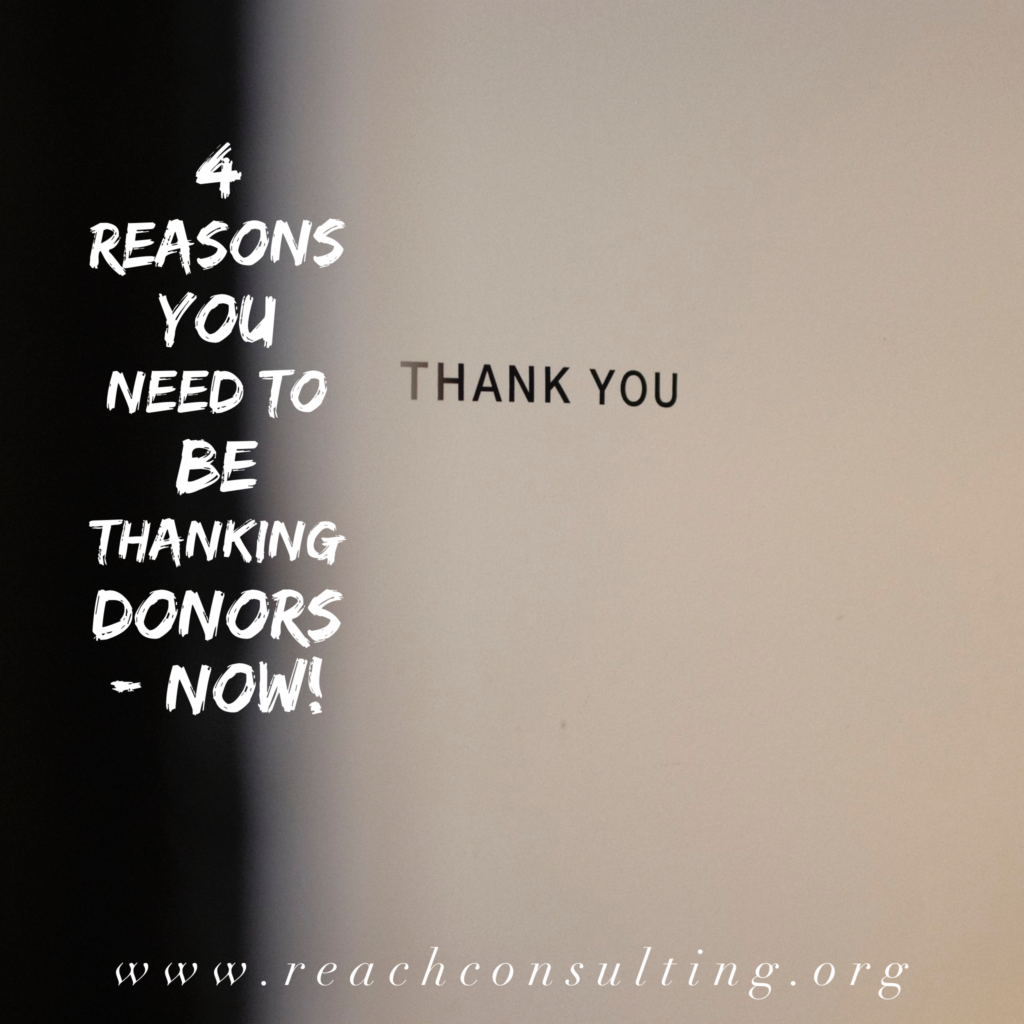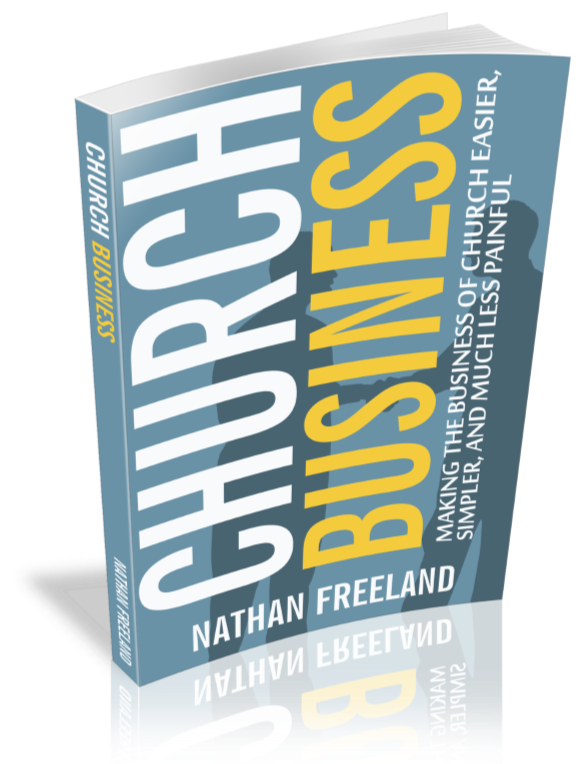Earlier this week I started a series of blog posts focused on maintaining or even increasing giving to your church during the COVID-19 pandemic. You can read Part 1 here about knowing who is most likely to give to your church.
Did your parents teach you to say “thank you” when someone gave you something? Mine did, and most of us parents teach our own kids the same thing. In the church, however, we often don’t do this ourselves!

Every church depends on donors. These are people who give financially because they believe in what you are doing. They love God’s Church, your church, the place they see making a difference not only in their life, but in the lives of others and their community. Nobody gives money to something they do not believe in. Nobody gives money because they have to. They give because they want to. Even though the Bible says we are to give a tithe, or ten percent of our income, we still choose to give because we want to honor God, because we love what He is doing in our midst and through the organizations we support.
But even considering when people do give, most still do not give a full ten percent. In fact, a vast majority of people who donate to churches, give far less than ten percent. According to a 2017 study, the United States national average of Christians who attend church give less than three percent.[1] Every pastor understands it’s well below what it should be. But their next question is, how do we increase that for churches? And with hundreds of other great organizations fighting for our congregant’s money at the same time, how do we make ourselves stand out?
We can no longer rely on the bi-annual Sunday message about tithing and giving to God. Certainly, that is important, and I encourage every pastor to speak regularly about this important Biblical truth. But it’s easy to tune you out for 40 minutes during your Sunday message when I’m not sure my gifts are really very appreciated by you, the pastor.
“You never thanked me once over the last several years as I’ve been giving my financial support of the church you lead,” is a common thought among church-goers.
Consider this: When was the last time you personally thanked one of your church members for their financial support? I mean, looked the person in the eyes and said, “Thank you for giving financially to this church.” Have you ever?
When was the last time you personally thanked one of your church members for their financial support?
Tweet
When was the last time you wrote a personal thank-you note to the person who donates enough to cover half your salary? Or the person who gave huge sums to help launch the building campaign? Or to help send youth students to camp? I don’t mean a form-letter mailed to everyone at the end of the year. I don’t mean a mass-letter printed and mailed to everyone who has ever joined a Sunday class and “thanked” them for their giving and then asked for more to make sure you’re in the black by the end of the year.
I mean a personal, handwritten, meaningful thank-you note. Mailed by the postman. Not emailed.
It makes a difference. A big difference.
Think of it this way from a personal point of view: When was the last time someone thanked you for your donation? We’ve all sent a one-time gift to some distant organization to help with disaster relief or to help send a nephew to summer camp or some other organization that tugged at our heart just enough to convince us to give a few dollars. Did you ever get a thank-you note? Even for just twenty dollars? I don’t mean the computer-generated statement that says, “you gave money and you can use this as proof for your taxes.” I mean a really personalized thank-you card that acknowledges you and your gift.
If you did, I bet you can name that organization because their letter meant something to you. It surprised you. It stood out. It reminded you that you gave, told you that your gift was important, and that it made a difference. It became personal. Somebody took the time to write out your name and address. If they did, I would also bet you would consider giving again if they asked.
So, let me ask you again, when was the last time you took the time to thank your donors for their giving to your church, to pay for the ministries you lead, and the life-change that is occurring because of your organization? Have you ever thanked them?
I attended a church for nine years and never once got a thank-you letter. Sure, I received the cursory letter that was sent out to all the members who gave. Twice a year I got a letter stating, “Thank you for your generosity, this is what we plan to do this year . . . yada, yada, yada.” It normally ended up in the trash before I finished reading it. The second letter I got in January stating, “Thank you for your generosity. Here is a list of your total donations for tax purposes.” Everything was printed on a computer: the letter, the financial information, and the address. The signature was printed. It was clear that everyone got one of these, but the dollar amounts would be different for each recipient. It’s incredibly impersonal.
I often thought, “Are you really thankful? Do you really think I was generous? Was I generous? I guess I wasn’t generous enough. I never got a real thank-you or phone call or anything personal. Do they really need my money? It seems like I’m just another number, another computer-generated-thanked-donor.”
We ask and hope people will give to God because it all belongs to Him anyway. As Jesus said, “Give to Caesar what is Caesar’s, and to God what is God’s,” in Matthew 22:21. We expect the strong Christians to follow this teaching regardless of whether we thank them or not. There is an expectation that our congregants will give to the church whether the pastor knows them or not. While there is truth to this, it’s not the whole truth.
People are still people. They want recognition. They want to be thanked. They want to know their money was received and being used wisely. They want to know it was accounted for. Humans need reassurance that what they do and give really matters.
So, thank them . . . the old-fashioned way! Mailing a short, handwritten letter communicates several things.
First, it acknowledges that the church received the gift. Have you ever donated to a new organization and never heard back? You might have asked yourself; did they even get it? Did the transaction go through online? Did it go to the right location when I mailed it? Or maybe you didn’t even hear back until the following January when they sent you an end-of-year statement and by that time, you had forgotten all about it . . . and their organization!
Second, it personalizes that the gift was noticed and didn’t just end up as one of the hundreds or thousands who also gave. It says, “We see you. You are appreciated.”
Third, it reminds the giver of what they did and how it matters. Their gift might have just helped change a life, boosted a ministry, or launched a new endeavor. But if you didn’t send a thank-you note, the donor would have never known how much it impacted others.
Lastly, it builds trust and acceptance. Since you took the time to acknowledge the gift and remind them of how they helped make a difference, they will certainly be much more open to not only giving more, but quite possibly a lot more.
A handwritten note of thanks can build trust and acceptance.
Tweet
So how do you go about thanking dozens, hundreds, or even thousands of constituents when they give to your church? I recommend a process that involves your whole team. A strategy that is simple, consistent and effective. In my next blog post I’ll explain how.
But for now, you can just start thanking your donors one at a time.

For this topic and 73 others, be sure to get my book, CHURCH BUSINESS: Making the Business of Church Easier, Simpler, and Much Less Painful.
[1] Nonprofits Source, https://nonprofitssource.com/online-giving-statistics/